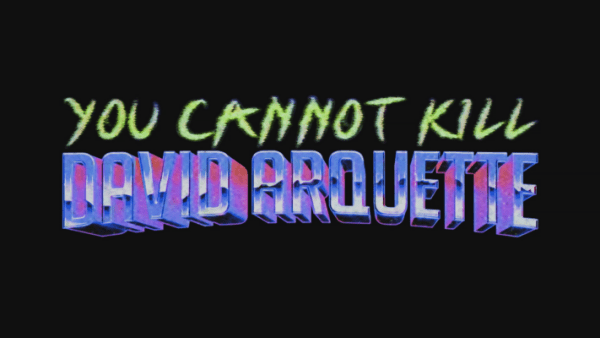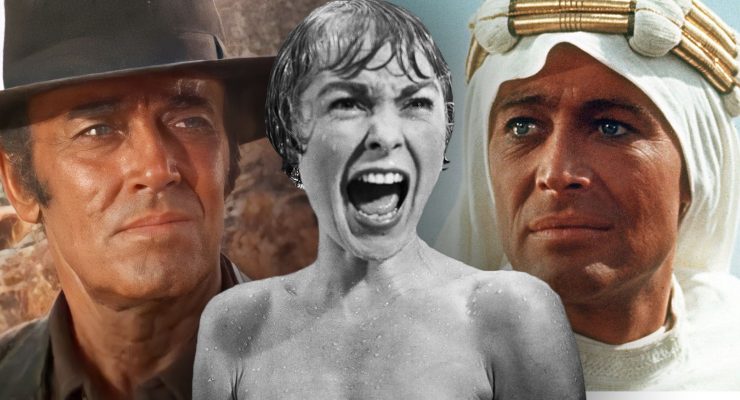David Arquette is most known for his role as Deputy Dewey in the widely popular horror franchise, Scream, but he is giving audiences a glance at his personal life in Super LTD’s latest documentary You Cannot Kill David Arquette, which is premiering August 28 via digital release and on-demand.
In case you haven’t heard of the doc, here is the official synopsis: “Branded as the most hated man in wrestling after winning a highly controversial WCW World Heavyweight Championship in 2000, actor David Arquette attempts a rocky return to the sport that stalled his promising Hollywood career. Dangerously determined to redeem his reputation and reclaim his self-respect, Arquette will stop at nothing to earn his place in professional wrestling.”
This wild ride wouldn’t be complete without the proper sounds to accompany it, that’s where Supervising Sound Editor Jacob Bloomfield-Misrach steps in. When we say proper sounds, we mean the sound of body slams, crowds roaring and yes, the sounds of spandex. It sounds humorous, but a there is a lot that goes into making a project like this feel as authentic as possible, especially when it has an “arc of a Marvel film”. To learn first hand about this process, we spoke to Jacob below about everything from what a Supervising Sound Editor really does to his work on You Cannot Kill David Arquette and 12 Hour Shift, which is headlining the Fantasia Film Festival later this month.
How did you first get involved with You Cannot Kill David Arquette?
I love working on films that take you for a ride. So when I got the phone call about this film I was pumped. I had just finished mixing 12 Hour Shift and the producers on that (Jordan and Matt at HCT.media, who are amazing) put me in touch with Christina Arquette. We spoke and then they sent me the trailer. That was it. I was hooked.
For readers that don’t really know what a Supervising Sound Editor does, can you explain that to them?
Sure thing. I’m the team captain. A filmmaker says “We need this to sound amazing. Here are some ideas about it. Now make it happen.” I go off and assemble the best team possible. I hire my sound designers, Foley artists, dialogue editors, ADR engineers, etc and I oversee each step of the process. Luckily my sound house IMRSV Sound already has an “A Team” built in, so that makes my job pretty easy.
How has You Cannot Kill David Arquette been different than other films you have worked on in the past?
This film is BIG! It has the arc of a Marvel film! I was so impressed the first time I saw it. It goes from intimate family moments to BANG! All of a sudden, we’re in the ring, and there are villains and arena crowds and glass tubes being smashed over the head. It’s a wild ride, and to work with all of those sounds was fantastic.

We heard that you even had to record the sound of spandex and spandex tearing for this film? Can you talk a little more about this?
Ha! Yes, clothing sounds are so important in a film. It’s what makes you feel close to each character. And there happens to be a lot of spandex in wrestling! To properly capture the fight scenes, we needed to use the real thing. One of my sound designers went to local wrestling matches and training gyms to get close up sounds of the fabric, movements and body sounds. It’s so important and it made all the difference.
What was the most challenging thing that you had to overcome while working on You Cannot Kill David Arquette?
How to push it to 11. The end of the film is huge. The music is big, the crowds are big, and the fight itself is big. As a mixer you have to be careful about it. If you simply push up the faders, the sounds will compete and the end result will be muddy. Instead, it’s a surgical process, carving out just the right frequencies so that everything sounds epic together.
Did you learn anything specifically from working on this film?
I learned a ton about wrestling. I had no idea how real it can be. Especially the indie wrestling circuit and backyard wrestling. Those people aren’t messing around. That’s real blood being spilled and real trips to the hospital. I don’t want to spoil the film, but you’ll be shocked how much they endure. David Arquette is a champ in my book. He trained and worked his ass off to be a legitimate wrestler. He earned his spot in the ring.
Another project you worked on, coincidentally starring David Arquette is 12 Hour Shift. It is part of the Fantasia Film Festival later this month. Can you tell us about your work on that?
Let me share something super nerdy that we did for the film (since your tag line is Geek Culture). There is a vending machine in the film that acts like it’s own character. We needed it to sound unique, so we took electromagnetic microphones and recorded various sources of electricity. We ran them through some processors, including modular synthesizers, and ended up with a pretty evil sounding vending machine. A lot of it is subconscious, but the viewer will always feel tense when that vending machine is around. I should also note that Brea Grant (writer/director of 12 Hr) is amazing. Her, plus the crew at HCT.media were a dream team to work with.
12 Hour Shift is a lot different than You Cannot Kill David Arquette in the fact that it’s scripted. Does a project being scripted or non-scripted change the way you approach it?
I love that question. I have one goal for every project, and that is to create the strongest emotional connection with the audience. I mix a film to fully immerse the viewer in the world we are creating. If I accomplish that, then I’ve done my job. It makes no difference if it’s a doc, a narrative or a commercial, but we have to connect.
During this quarantine time at home what have you been binge watching?
I finally watched The Mandalorian. I really enjoyed that. I think I watched the whole series in 2-3 days. And Iconic Characters on Hulu is cool. It made me revisit all of Seth Rogen’s catalogue. That guy is the best.
Many thanks to Jacob Bloomfield-Misrach for taking the time for this interview.













